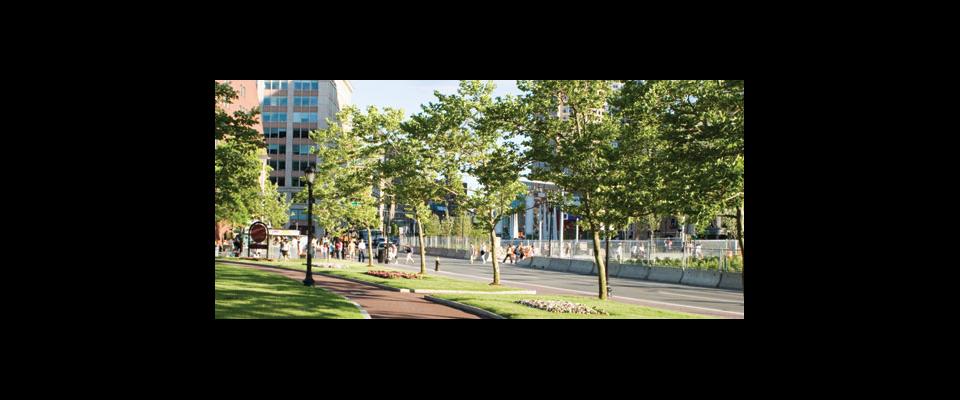When marked crosswalks send pedestrians the wrong signal.
A crosswalk might appear to be the safest route across a busy, multi-lane street, but research conducted by the Federal Highway Administration shows that pedestrians are almost five times more likely to be struck in a painted crosswalk than at an unmarked crossing.
In an attempt to explain this counterintuitive finding, transportation engineer Meghan Mitman, M.S. ’07, and her team at Berkeley’s Traffic Safety Center observed the behavior of pedestrians and drivers at six Bay Area intersections. They found that pedestrians at unmarked crosswalks, perhaps uncertain of their right-of-way, tended to wait for longer gaps in traffic and then run across the street when they saw an opportunity. At marked crosswalks, by contrast, pedestrians were more likely to assert their right-of-way, and drivers were more likely to yield. But a dangerous scenario would arise when a car in one lane yielded to pedestrians in the crosswalk, and an approaching car in the next lane over, unable to see the pedestrians, failed to stop.
To avoid giving pedestrians this false sense of security, some cities are planning to remove painted crosswalks at high-accident crossings, but Mitman, now with national transportation firm Fehr and Peers, thinks that action should be a last resort only. She advocates education and enforcement instead, and more active traffic-control equipment such as flashing, in-pavement lights that are activated by the crossing pedestrian. It’s a balance, she says, between empowering pedestrians and warning them that cars might not stop. Says Mitman, “It’s not saying, ‘OK, pedestrian, good luck.’ It’s saying that you do have the right of way, but you need to assert that right—right away.”





















